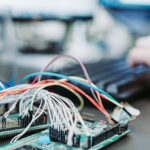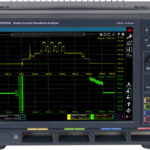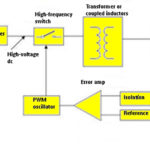The first part of EEWorld’s two-part “virtual roundtable” discussion on power system design considerations for wireless IoT nodes and wearables focuses on the use of low dropout regulators (LDOs). Our panelists are Kyle Van Renterghem, (KVR) Marketing & Applications Manager, Low Input Voltage LDOs, Texas Instruments, and Julian Hagedorn (JH), Systems Engineer, Texas Instruments.
JS: What is the least understood LDO specification?

KVR: Many designers misunderstand high-frequency power supply rejection ratio (PSRR). Some people think that the LDO is the primary source of PSRR for frequencies at or above 1 MHz; however, the PSRR in this region is actually dominated by bypass capacitors that are used on the input and output of the LDO. You can significantly improve the high-frequency PSRR of your power supply by selecting input and output capacitors that have a lower impedance at the frequencies you want extra filtering for.
JS: What is the most common mistake designers make when using an LDO in a wireless IoT node or wearable device?
KVR: Many designers for wireless IoT node or wearable devices focus on minimizing the quiescent current (IQ) of their ICs, including their LDOs. However, some forget to consider how the IC behaves when loaded or during a transient event. Since these low-IQ applications save battery life by frequently switching between low load/shutdown modes and higher load/active mode, they can see many transient events, leading to poor transient performance and may cause system performance issues if the LDO is slow to respond.
That’s why it’s so important to understand the other performance specifications that your application/load requires. What load or line transients will the LDO see, and how much deviation can the output voltage have while meeting your load’s requirements? If your LDO is powered from a buck/boost converter, evaluate how much PSRR does the LDO need (and at what frequencies) to keep the output noise within your load’s specifications. The curves in a datasheet will likely give you a great idea of how the device will perform as long as you know what is important to your application. Just remember that if you review the data sheet and still have questions, don’t hesitate to order an evaluation module and do some testing more specific to your application to get the confidence you need to complete your design.
JS: What is the key to maximizing the performance of LDOs in wireless IoT nodes and wearables?
KVR: It may sound somewhat obvious but keeping your LDOs away from dropout is crucial. When the input voltage gets too low, an LDO is unable to maintain its high-performance specifications such as PSRR and output accuracy/tolerance. Things get even worse for applications where designers are trying to save every mW of power, as most LDOs see a substantial increase in ground current when they are in dropout. This extra current is being taken from your power source and is simply going to ground – meaning it is wasted since it isn’t going to the load where it would be used for something productive.
Keep in mind that different companies or data sheets may define dropout voltage (VDO) in different ways, so make sure you understand how it’s defined for the LDO you are considering using. Technically, an LDO can regulate with 1 mV above the minimum input voltage required (VIN>VOUT+VDO) but giving your LDO a little extra input voltage will help you get the performance you actually need. You don’t want to waste unnecessary power, but using a slightly higher input voltage will also provide some buffer if there is a transient on the input voltage feeding your LDO.
JS: When, if ever, is it recommended to use a buck/boost converter to provide an LDO input in these applications?

JH: When VIN is significantly greater than VOUT, the efficiency of the LDO will be low. This may not matter much when supplying only a few mA of output current, but as the output current increases, the amount of wasted power can begin to affect battery life and can also cause the LDO to heat up beyond the application’s requirements or the device’s specifications. If that happens, then using a buck converter to down regulate the LDO input voltage will reduce power loss and heat dissipation. Another case would be if the input voltage is too low to operate your LDO, then a boost converter can be used to power the LDO.
In many wireless IoT sensor nodes, the radio interface needs a higher voltage to increase the transmit power, while the rest of the system can be supplied with a lower voltage level. Instead of using two DC/DC converters, a single converter with dynamic voltage scaling can be used to implement the function to switch between two voltages (like TPS63900). The buck-boost converter adds value by supporting two output voltage levels that can be higher and lower than the battery voltage. The voltage drop across an LDO can be minimized to increase the overall efficiency of the application.

In applications where the system is in low power mode for a long time, the dynamic voltage scaling feature saves valuable battery capacity by lowering the battery current. That, in turn, increases the system lifetime while keeping the transmit power high. In this scenario, the optional LDO in front of the low power portion of the system is needed if the system can’t tolerate the higher voltage for the wireless interface.
JS: Thank you to our Virtual Roundtable participants for sharing their experience and insights into power system design considerations for wireless IoT nodes and wearables! You might also be interested in reading the second part of this virtual roundtable that focuses on switching regulators and the associated technical challenges.







Leave a Reply